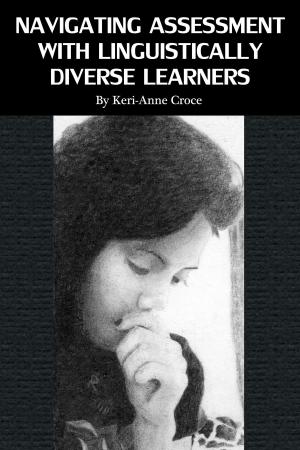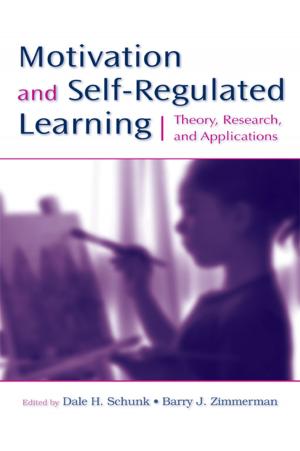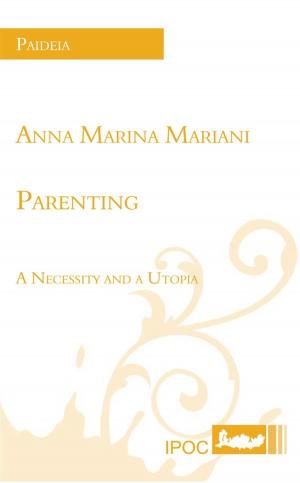P2P Collaboration: The Disadvantages of P2P (Peer-to-Peer) Collaboration, PAL (Peer Assisted Learning), and PL (Peer Learning).
Nonfiction, Reference & Language, Education & Teaching, Secondary Education, Educational Theory| Author: | William Van Zyl | ISBN: | 9780473438388 |
| Publisher: | Five House Publishing | Publication: | May 28, 2018 |
| Imprint: | Language: | English |
| Author: | William Van Zyl |
| ISBN: | 9780473438388 |
| Publisher: | Five House Publishing |
| Publication: | May 28, 2018 |
| Imprint: | |
| Language: | English |
Abstract:
Peer Learning (PL), Peer-to-Peer collaboration (P2P), and Peer Assisted Learning (PAL) are very useful learning techniques in the classroom to promote teaching and learning. However, there are some disadvantages. In this paper, the disadvantages will be discussed in a general context, which could be applied to any subject area. The practical implications for Design and Visual Communication (DVC) are summarised in conclusion (subject specific).
The first disadvantage is that many teachers do not take the time to train students on how to collaborate and explain what a successful collaborative process looks like (Van Zyl, 2016). This an essential element in a successful collaborative environment, but it is often ignored.
The second disadvantage is that quality control systems and methods are not in place or are not developed in PAL & P2P collaborative teaching and learning. Lack of quality control by teachers is problematic. Quality control is achieved by monitoring students closely during the collaborative process, and then by providing constructive feedback (scaffolding) to students as soon as possible. This strategy will impact on the success of collaboration in class (Van Zyl, 2016).
The third disadvantage is that teachers should demarcate the appropriate 'depth' and 'range' as per identified curriculum level for each student and within the context of the different groups (Van Zyl, 2016). Learners should know exactly what is expected and to what 'depth' they should investigate (Van Zyl, 2016). Teachers should be very specific.
The fourth disadvantage is that PAL and P2P are not always peer friendly. Course material is not always adapted to suit PAL and P2P teaching and learning. The constant monitoring of the peer collaboration processes and the rapid action by the tutor to make changes within the process is critical for managing the collaborative process successfully. Students should see the teacher 'steering' the collaboration process. If students perceive the active involvement of the teacher, it will foster the confidence of students (Van Zyl, 2016). Teachers should not leave it to chance.
The fifth disadvantage is that there are three areas of ethical concern within the non-teacher-led environment of PAL and P2P processes. Namely, accountability, peer competence & informed consent.
Ethical concerns, like accountability, peer-competence, intellectual property rights, and informed consent regarding PAL and P2P courses is to be managed by the teacher (Van Zyl, 2016). See the ethical concern section for a detailed discussion on the management of peer-related teaching and learning. Some of the disadvantages are discussed referring to the following categories: no equal opportunities exist to students; students are not teachers; collaboration is not effective for all groups (e.g. gifted and talented, students with learning difficulties, physically disabled students, and other categories).
The sixth disadvantage is generalised misconceptions regarding the process: Role and function of such activities could be misconceived:
-not equal opportunities to students
-students are not teachers
-not effective for gifted, underachievers, and other categories (learning difficulty, physically impaired, and others).
Teachers should ensure that students perceive that the peer learning and peer teaching include equal opportunities for all students (Van Zyl, 2016). Teachers should not advantage some students by spending more time with them. Students should be trained to act as 'co-teachers', so everyone wins. Some students and groups will not benefit from peer teaching and learning....
Abstract:
Peer Learning (PL), Peer-to-Peer collaboration (P2P), and Peer Assisted Learning (PAL) are very useful learning techniques in the classroom to promote teaching and learning. However, there are some disadvantages. In this paper, the disadvantages will be discussed in a general context, which could be applied to any subject area. The practical implications for Design and Visual Communication (DVC) are summarised in conclusion (subject specific).
The first disadvantage is that many teachers do not take the time to train students on how to collaborate and explain what a successful collaborative process looks like (Van Zyl, 2016). This an essential element in a successful collaborative environment, but it is often ignored.
The second disadvantage is that quality control systems and methods are not in place or are not developed in PAL & P2P collaborative teaching and learning. Lack of quality control by teachers is problematic. Quality control is achieved by monitoring students closely during the collaborative process, and then by providing constructive feedback (scaffolding) to students as soon as possible. This strategy will impact on the success of collaboration in class (Van Zyl, 2016).
The third disadvantage is that teachers should demarcate the appropriate 'depth' and 'range' as per identified curriculum level for each student and within the context of the different groups (Van Zyl, 2016). Learners should know exactly what is expected and to what 'depth' they should investigate (Van Zyl, 2016). Teachers should be very specific.
The fourth disadvantage is that PAL and P2P are not always peer friendly. Course material is not always adapted to suit PAL and P2P teaching and learning. The constant monitoring of the peer collaboration processes and the rapid action by the tutor to make changes within the process is critical for managing the collaborative process successfully. Students should see the teacher 'steering' the collaboration process. If students perceive the active involvement of the teacher, it will foster the confidence of students (Van Zyl, 2016). Teachers should not leave it to chance.
The fifth disadvantage is that there are three areas of ethical concern within the non-teacher-led environment of PAL and P2P processes. Namely, accountability, peer competence & informed consent.
Ethical concerns, like accountability, peer-competence, intellectual property rights, and informed consent regarding PAL and P2P courses is to be managed by the teacher (Van Zyl, 2016). See the ethical concern section for a detailed discussion on the management of peer-related teaching and learning. Some of the disadvantages are discussed referring to the following categories: no equal opportunities exist to students; students are not teachers; collaboration is not effective for all groups (e.g. gifted and talented, students with learning difficulties, physically disabled students, and other categories).
The sixth disadvantage is generalised misconceptions regarding the process: Role and function of such activities could be misconceived:
-not equal opportunities to students
-students are not teachers
-not effective for gifted, underachievers, and other categories (learning difficulty, physically impaired, and others).
Teachers should ensure that students perceive that the peer learning and peer teaching include equal opportunities for all students (Van Zyl, 2016). Teachers should not advantage some students by spending more time with them. Students should be trained to act as 'co-teachers', so everyone wins. Some students and groups will not benefit from peer teaching and learning....















